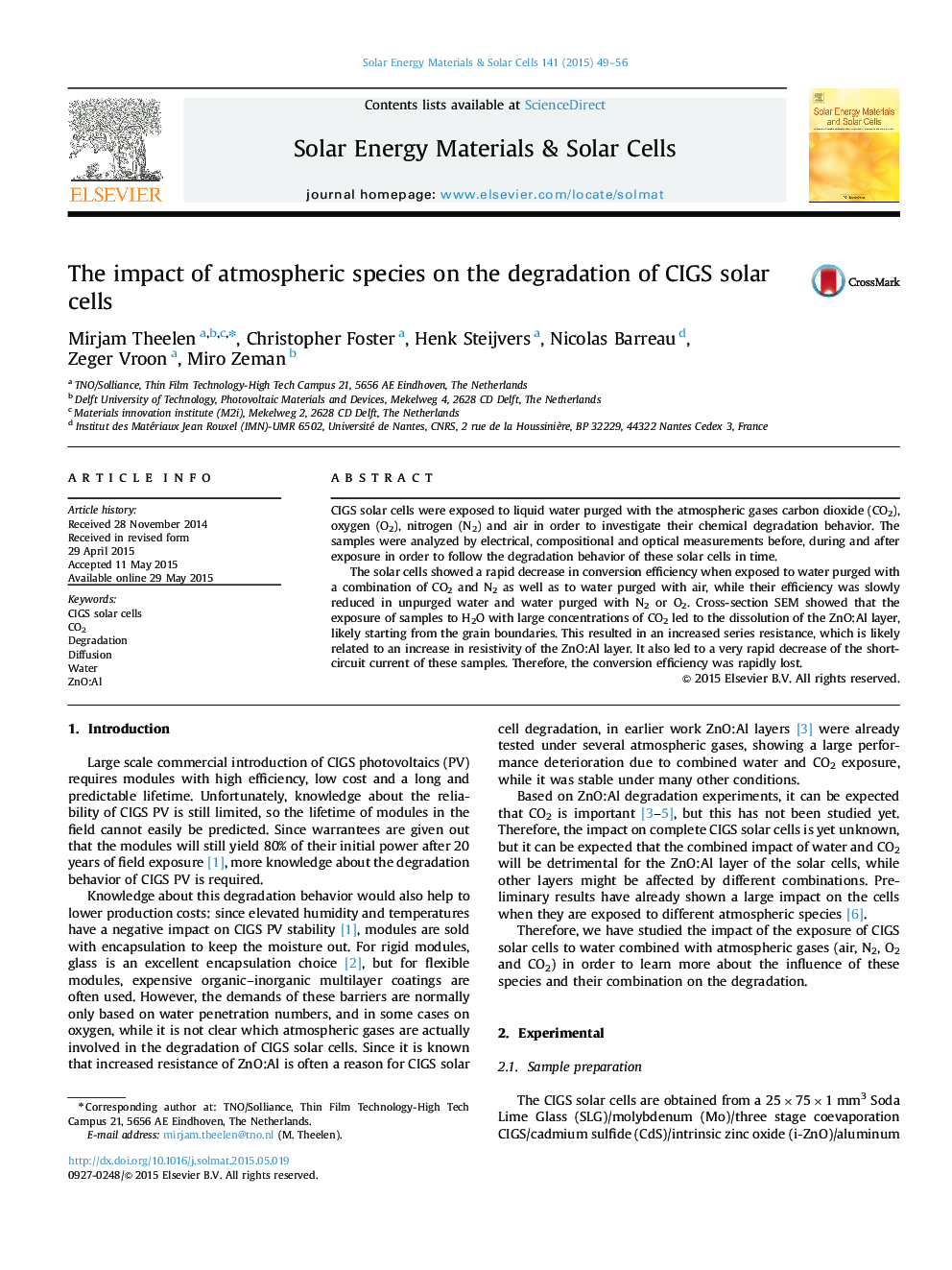| Article ID | Journal | Published Year | Pages | File Type |
|---|---|---|---|---|
| 77724 | Solar Energy Materials and Solar Cells | 2015 | 8 Pages |
•CIGS solar cells were exposed to water purged with O2, N2, air and a CO2/N2 mixture.•CIGS solar cells are fairly stable in water purged with O2 and N2 or without purge.•Their efficiency decreases rapidly in water with large quantities of CO2.•This is caused by increased series resistance and decreased short circuit current.•The zinc oxide layers show local dissolution starting from the grain boundaries.
CIGS solar cells were exposed to liquid water purged with the atmospheric gases carbon dioxide (CO2), oxygen (O2), nitrogen (N2) and air in order to investigate their chemical degradation behavior. The samples were analyzed by electrical, compositional and optical measurements before, during and after exposure in order to follow the degradation behavior of these solar cells in time.The solar cells showed a rapid decrease in conversion efficiency when exposed to water purged with a combination of CO2 and N2 as well as to water purged with air, while their efficiency was slowly reduced in unpurged water and water purged with N2 or O2. Cross-section SEM showed that the exposure of samples to H2O with large concentrations of CO2 led to the dissolution of the ZnO:Al layer, likely starting from the grain boundaries. This resulted in an increased series resistance, which is likely related to an increase in resistivity of the ZnO:Al layer. It also led to a very rapid decrease of the short-circuit current of these samples. Therefore, the conversion efficiency was rapidly lost.
